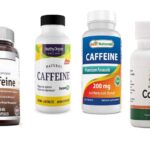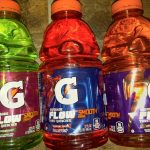How To Boost Thyroid Function With Caffeine Intake

Thyroid function refers to the proper operation of the thyroid gland, a butterfly-shaped organ located in the front of the neck. The thyroid gland plays a crucial role in regulating various physiological processes in the body by producing thyroid hormones—primarily thyroxine (T4) and triiodothyronine (T3). These hormones have a significant impact on metabolism, energy production, growth, and the functioning of many organs and systems.
The thyroid gland’s function is tightly controlled by a feedback loop involving the hypothalamus and the pituitary gland in the brain. When thyroid hormone levels drop, the hypothalamus releases thyrotropin-releasing hormone (TRH), which stimulates the pituitary gland to release thyroid-stimulating hormone (TSH). TSH then prompts the thyroid gland to produce and release more thyroid hormones.
Thyroid hormones influence various bodily processes, including:
1. Metabolism: Thyroid hormones play a crucial role in regulating the body’s metabolic rate—the speed at which the body converts food into energy. They affect how the body uses energy and burns calories.
2. Temperature Regulation: Thyroid hormones help maintain a stable body temperature by influencing the rate at which cells produce heat.
3. Heart and Nervous System: These hormones affect heart rate and the functioning of the nervous system. They help ensure the proper functioning of the cardiovascular system.
4. Growth and Development: Thyroid hormones are crucial for normal growth and development, particularly during childhood and adolescence. They are essential for proper brain development in infants.
5. Reproductive System: Thyroid hormones play a role in reproductive health and fertility. They can influence menstrual cycles and impact pregnancy.
6. Cholesterol Levels: Thyroid hormones help regulate cholesterol levels by influencing the breakdown of fats in the body.
7. Digestive System: Thyroid hormones influence the speed and efficiency of the digestive system.
When the thyroid gland doesn’t produce enough hormones, a condition known as hypothyroidism occurs. This can lead to symptoms such as fatigue, weight gain, cold sensitivity, and depression. Conversely, excessive production of thyroid hormones, known as hyperthyroidism, can result in symptoms such as weight loss, rapid heart rate, anxiety, and heat intolerance.
Thyroid function is crucial for maintaining overall health, and any disruptions in the production and regulation of thyroid hormones can have widespread effects on various bodily functions.
Thyroid function and caffeine consumption
Recent research indicates that caffeine consumption could potentially have a positive impact on thyroid function for individuals with metabolic disorders. The study, published in the Nutritional Journal, highlights the possibility of caffeine being a beneficial dietary component to support thyroid health in people facing metabolic challenges, although further research is needed to establish a definite cause-and-effect relationship.
The authors of the study emphasize that caffeine, as a widely consumed and easily accessible dietary ingredient, has the potential to contribute to thyroid health improvement in those with metabolic disorders. The research reveals a non-linear correlation between caffeine intake, falling within established healthy limits, and thyroid levels.
While moderate caffeine consumption has previously been linked to lowering the risk of metabolic disorders and displaying certain mental health advantages, its effects on thyroid hormone, which plays a crucial role in systemic metabolism and neurologic development, have not been extensively explored.
To delve into these potential effects, Yu Zhou and his colleagues from the Department of Rehabilitation Medicine at Fujian Medical University in Fuzhou, China, examined data from the National Health and Nutrition Examination Survey (NHANES) III 2007–2012 study. The investigation encompassed 2,582 participants, for whom comprehensive data were available regarding medical conditions, dietary habits, thyroid function, and demographic information.
The research participants were categorized into three subgroups based on factors like gender, age, body mass index (BMI), presence of hyperglycemia, hypertension, and cardio-cerebral vascular disease (CVD).
The first group (n = 208) represented the most metabolically unhealthy individuals. This group exhibited the highest BMI and the oldest age. Moreover, this cohort had elevated rates of hypertension, hyperglycemia, and CVD. Interestingly, this group displayed the lowest level of caffeine consumption.
The study points towards a potential link between caffeine intake and thyroid function in individuals dealing with metabolic disorders. While more extensive investigation is necessary to establish the exact relationship between caffeine consumption and thyroid health, the findings highlight caffeine’s potential role as a dietary agent in promoting better thyroid function among those with metabolic challenges.
How To Boost Thyroid Function With Caffeine Intake
While caffeine intake has been suggested to have some potential benefits for thyroid function, it’s important to approach any dietary changes with caution and consult a healthcare professional, especially if you have an existing medical condition. Here are a few general tips related to caffeine and thyroid health:
1. Moderation: Moderation is key. Excessive caffeine consumption can have negative effects on overall health, including disrupting sleep, increasing heart rate, and causing jitteriness. Stick to recommended limits for daily caffeine intake.
2. Timing: If you choose to consume caffeine, consider timing it well. Some individuals find that consuming caffeine in the morning has less impact on sleep quality and can be more effective in boosting energy levels.
3. Monitor Your Body’s Response: Pay attention to how your body responds to caffeine. Some people are more sensitive to its effects, while others may tolerate it better. Monitor any changes in energy levels, mood, or sleep patterns.
4. Interaction with Medications: If you’re taking thyroid medications, be aware that caffeine can interact with their absorption. It’s best to consult your healthcare provider about the timing of caffeine consumption in relation to your medications.
5. Balanced Diet: While caffeine might have some potential benefits, it’s just one component of a healthy lifestyle. Focus on a balanced diet rich in nutrients that support thyroid health, such as iodine, selenium, and zinc.
6. Hydration: Caffeine is a diuretic, which means it can contribute to dehydration. Staying hydrated is important for overall health, including thyroid function.
7. Individual Differences: Keep in mind that everyone’s body responds differently to caffeine. Some individuals might experience increased alertness and energy, while others might feel jittery or experience heart palpitations.
8. Consult a Professional: If you have thyroid issues or other medical conditions, it’s important to talk to a healthcare provider before making any changes to your caffeine consumption or diet.
It’s important to note that while some studies have suggested potential links between caffeine and thyroid function, the research in this area is still evolving. The impact of caffeine on thyroid health can vary widely among individuals, and there isn’t a one-size-fits-all approach. If you’re interested in exploring the potential benefits of caffeine for thyroid function, it’s best to approach it with moderation, awareness of your body’s response, and professional guidance.





